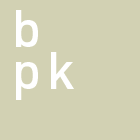Prussian Heritage Image Archive
 |
|
| Country | Germany |
|---|---|
| Established | 1966 |
| Location | Otto-Nagel Haus Märkisches Ufer 16-18 10179 Berlin-Mitte |
| Branch of | Berlin State Library |
| Collection | |
| Items collected | photographs, drawings, advertisements, cartoons |
| Size | 13.5 million images |
| Legal deposit | No |
| Access and use | |
| Access requirements | Commercial and Academic researchers, by appointment only |
| Circulation | No public circulation |
| Other information | |
| Director | Hanns-Peter Frentz |
| Website | [1] |
The Prussian Heritage Image Archive (German: Bildarchiv Preußischer Kulturbesitz or 'bpk') is an agency of the Prussian Cultural Heritage Foundation. The archive is housed at the Otto Nagel-Haus in Berlin, Germany and offers photographs, cartoons and drawings in the fields of history, culture and fine arts. The collection also contains the personal estates, archives and portfolios of many famous photographers who documented life in Germany. Organizationally, the archive is a division of the Berlin State Library.
The core of the collection was built in 1966 from the historical picture library of Hermann Handke. This stock consists of about 1 million daguerrotypes, talbotypes, photographic prints, negatives, engravings and lithographs. Through targeted acquisitions, donations and estate gifts, bpk's collection has grown to over 12 million photographs today and is one of the largest in Europe.
Photographs documenting contemporary German history form the vast majority of the collection. Photographs of works of fine arts and culture from famous museums around the world are the second main focus.
The earliest part of the collection starts with photographs from the period of the German Empire (1871–1918). During the Weimar Republic (1919–1933), press photography is particularly well represented. The period of the Third Reich and World War II (1933–1945) is widely documented by many photographers, some of whom also went on to document early postwar Germany (1945–49). Current events in the later years of West Germany is extensively well represented, as well as photographs of everyday life in the communist-ruled German Democratic Republic.
...
Wikipedia
